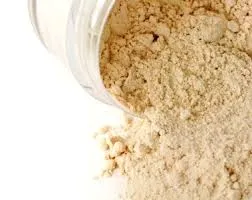Understanding the Types of Chlorination A Key to Water Treatment
Chlorination is a widely used method in water treatment aimed at disinfecting water and making it safe for human consumption. This process involves the addition of chlorine or chlorine compounds to water, ensuring the elimination of harmful pathogens. With various types of chlorination methods available, water treatment facilities can choose the most suitable option based on their specific needs. This article explores the different types of chlorination and their applications in water treatment.
1. Free Chlorination
Free chlorination is one of the most common methods employed in municipal water treatment. In this process, chlorine gas, sodium hypochlorite, or calcium hypochlorite is added to water, resulting in the formation of hypochlorous acid, which is the active disinfectant. This method is effective against a wide range of bacteria and viruses and is often used as a primary means of disinfection. Free chlorination is especially beneficial for surface water sources, where organic matter may be present, as it helps to oxidize these substances, improving overall water quality.
2. Combined Chlorination
In combined chlorination, chlorine is used in conjunction with ammonia to form chloramines. This method is mainly employed in systems where water must remain chlorinated for longer durations, such as in large distribution systems. Chloramines offer a more stable form of disinfection that lasts longer than free chlorine, making them ideal for maintaining residual levels of disinfectant throughout the water supply network. However, chloramines are less effective at killing certain pathogens, which means that careful monitoring and management are needed to ensure water safety.
types of chlorination pdf

Pre-chlorination involves the addition of chlorine to raw water before it undergoes further treatment processes such as sedimentation and filtration. This method not only helps in controlling algae and odor prior to treatment but also aids in the disinfection of the incoming water. By using pre-chlorination, water treatment plants can reduce the load of pathogens and organic materials, making subsequent treatment steps more efficient. It's particularly advantageous for lakes and reservoirs where organic matter can lead to contamination.
4. Post-Chlorination
Post-chlorination is carried out after water has been treated and is ready for distribution. This method ensures that chlorine is present in the water as it moves through the distribution system, providing ongoing disinfection. The use of post-chlorination allows water treatment facilities to maintain a residual level of chlorine, which is crucial for preventing regrowth of pathogens in the pipes and ensuring that any contaminants introduced during transport are effectively managed.
5. Ozonation and Chlorination
Some advanced water treatment facilities employ a combination of ozonation and chlorination. Ozonation utilizes ozone (O3) as a powerful oxidant to effectively destroy a wide range of contaminants. Following ozonation, chlorination is used to provide a stable residual disinfectant for the distribution system. This dual approach not only maximizes pathogen removal but also minimizes the formation of disinfection by-products, which can pose health risks.
Conclusion
Chlorination remains a cornerstone of water treatment practices across the globe. Understanding the various types of chlorination—free chlorination, combined chlorination, pre-chlorination, post-chlorination, and ozonation—enables water treatment facilities to design effective disinfection strategies tailored to their specific challenges. By prioritizing public health through effective water treatment methods, communities can ensure a safe and reliable drinking water supply, ultimately promoting the well-being of their populations. With ongoing advancements in technology and a growing understanding of water chemistry, the future of chlorination and water treatment looks promising, paving the way for safer drinking water worldwide.

